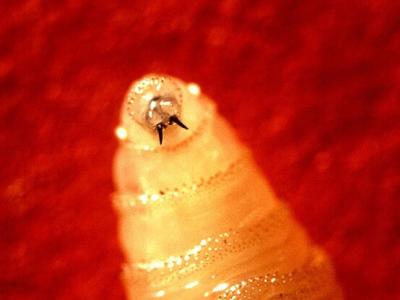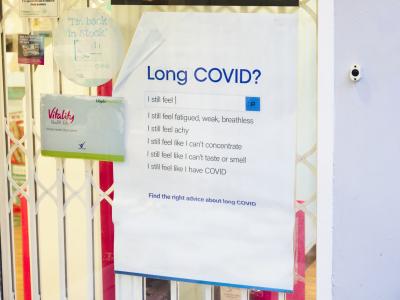Tests find flu, common cold viruses in ill passengers on Emirates flights
Tests on 10 people on a flight from Dubai to New York City who were hospitalized afterward showed no illnesses except for flu and common cold viruses, the New York City Department of Health and Mental Hygiene (NYC Health) announced today, adding that it expects all 10 people to be released soon.
The Emirates Airline flight had stopped in Mecca in Saudi Arabia en route to New York, raising concerns that some passengers may have been sick with Middle East respiratory syndrome coronavirus (MERS-CoV).
At a media briefing yesterday, Oxiris Barbot, MD, the city's acting health commissioner, said 106 people on the flight carrying 521 people initially reported symptoms, such as cough, fever, or vomiting. She said the US Centers for Disease Control and Prevention and the state health department screened each person, which whittled down the number of actively sick people to 10, including 7 crew members and 3 passengers.
Barbot noted that flu is present in the Arabian Peninsula and that, given the incubation period, it wouldn't be surprising for some to get sick during a long flight. Barbot added that many of the initially large number people who reported symptoms likely reflected the "worried well."
As CIDRAP News was going to press today, Reuters reported that passengers and crew on two flights arriving at Philadelphia International Airport were held so health officials could investigate reports of 12 people who became ill with flu-like symptoms.
NYC Health Twitter feed
Sep 5 NYC Health media briefing
Sep 5 CIDRAP News story "Illnesses on flight grounds Emirates flight in NYC, 10 taken to hospital"
Sep 6 Reuters story
BioCryst receives CDC contract to add peramivir to national stockpile
BioCryst Pharmaceuticals announced today that the US Centers for Disease Control and Prevention (CDC) has awarded the company a $34.7 million contract to provide up to 50,000 doses of the injectable antiviral Rapivab (peramivir) over a 5-year period for the nation's Strategic National Stockpile.
At the end of 2014 the Food and Drug Administration (FDA) approved peramivir for treating influenza in adults, and in 2017 it expanded the indication for children ages 2 and older. The drug is a neuraminidase inhibitor that can be used when patients, such as those with severe infections, can't tolerate oral or inhaled antivirals.
According to the statement from BioCryst, located in Research Triangle Park, N.C., peramivir is administered by intravenous infusion for at least 15 minutes. Neuraminidase inhibitors are the gold standard for treating seasonal flu, as well as infections from zoonotic strains, including those that have pandemic potential.
Jon Stonehouse, BioCryst's chief executive officer, said in the statement, "We appreciate the CDC acknowledging the value of Rapivab to patients and our national security."
Sep 6 BioCryst press release
NIAID announces trial to test H5N1 vaccine immune boost via topical cream
Federal health officials yesterday announced the launch of a trial to see if use of a topical cream can boost the immune response of an inactivated H5N1 avian influenza vaccine that was approved in 2007 and is part of the National Pre-pandemic Influenza Vaccine Stockpile.
The National Institute of Allergy and Infectious Diseases (NIAID), which supports the Baylor College of Medicine lab where investigators are studying the approach, said topical imiquimod cream, commonly used to treat genital warts and some skin cancers, activates the innate immune system. It added that research teams from Hong Kong recently conducted two trials that suggested imiquimod cream applied before seasonal flu vaccination significantly improved immune response when compared with a control group.
The strategy could stretch the supply of H5N1 vaccines, because fewer doses would be needed achieve the target immune response, the NIAID said in a news release.
The phase 1 trial will include 50 healthy adults ages 18 to 50 years old. Participants will receive two intradermal doses 21 days apart given by microneedle injection of an H5N1 vaccine made by Sanofi Pasteur. Subjects will be randomly assigned to one of two treatment groups, one of which will have Aldara, an FDA-approved imiquimod cream, applied to their upper arm 15 minutes before each vaccination. The control group will receive a placebo aqueous cream applied in the same manner.
Researchers will monitor for any injection site or systemic reactions, and participants will visit the clinic regularly over the next 7 months for blood sampling so the team can assess immune response. The first subject was vaccinated on Jun 19, and investigators hope to have early study results by the end of the year.
"NIAID is pleased to support a clinical trial evaluating an innovative way to boost immune responses to a pre-pandemic vaccine," Anthony Fauci, MD, NIAID director, said in the statement. He added that the Vaccine and Treatment Evaluation Units, which includes the Baylor lab, are a crucial component of US pandemic influenza preparedness efforts.
Sep 5 NIAID press release
WHO summarizes China's sixth H7N9 wave, weighs in on virus sharing
In an update on human H7N9 avian flu infections in China, the World Health Organization (WHO) said yesterday that only three cases were reported in the sixth wave of activity that began in October 2017, a dramatic drop from earlier waves. It also detailed China's efforts in sharing information about H7N9 flu viruses, which comes in the wake of recent reports that China hasn't been sharing recent isolates to assist with the development of vaccines and treatments.
The WHO said there have been fewer H7N9 detections in Chinese poultry and the environment, according to reports from the mainland and Hong Kong. Following an unprecedented number of illnesses in the fifth wave that spanned parts of 2016 and 2017, China deployed a new vaccine against both H5 and H7 in poultry across all of its provinces, according to earlier reports.
The three cases for the sixth wave were all reported earlier and involved patients from Yunnan, Guangdong, and Xinjiang Uygur provinces. Since March 2013 when the virus was first detected in humans, the WHO has received reports of 1,567 lab-confirmed cases, at least 615 of them fatal. The WHO said though detections have decreased, as long as the virus circulates—even at low levels—it expects more human cases.
Regarding the virus sharing issue, the WHO said China has consistently been sharing genetic sequence data on H7N9 viruses with the Global Initiative on Sharing All Influenza Data (GISAID), a public database. It added that a WHO collaborating center in the Chinese Center for Disease Control (China CDC) has shared virus samples with other WHO collaborating centers and other laboratories to create and update lab tests, reference reagents, and high-growth viruses used for vaccine development and production.
The WHO said that China CDC has completed or is processing all requests for the H7N9 virus and noted that 12 high-growth H7N9 viruses are available through the WHO's Global Influenza Surveillance and Response System.
Sep 5 WHO update
Aug 27 New York Times story on virus sharing










